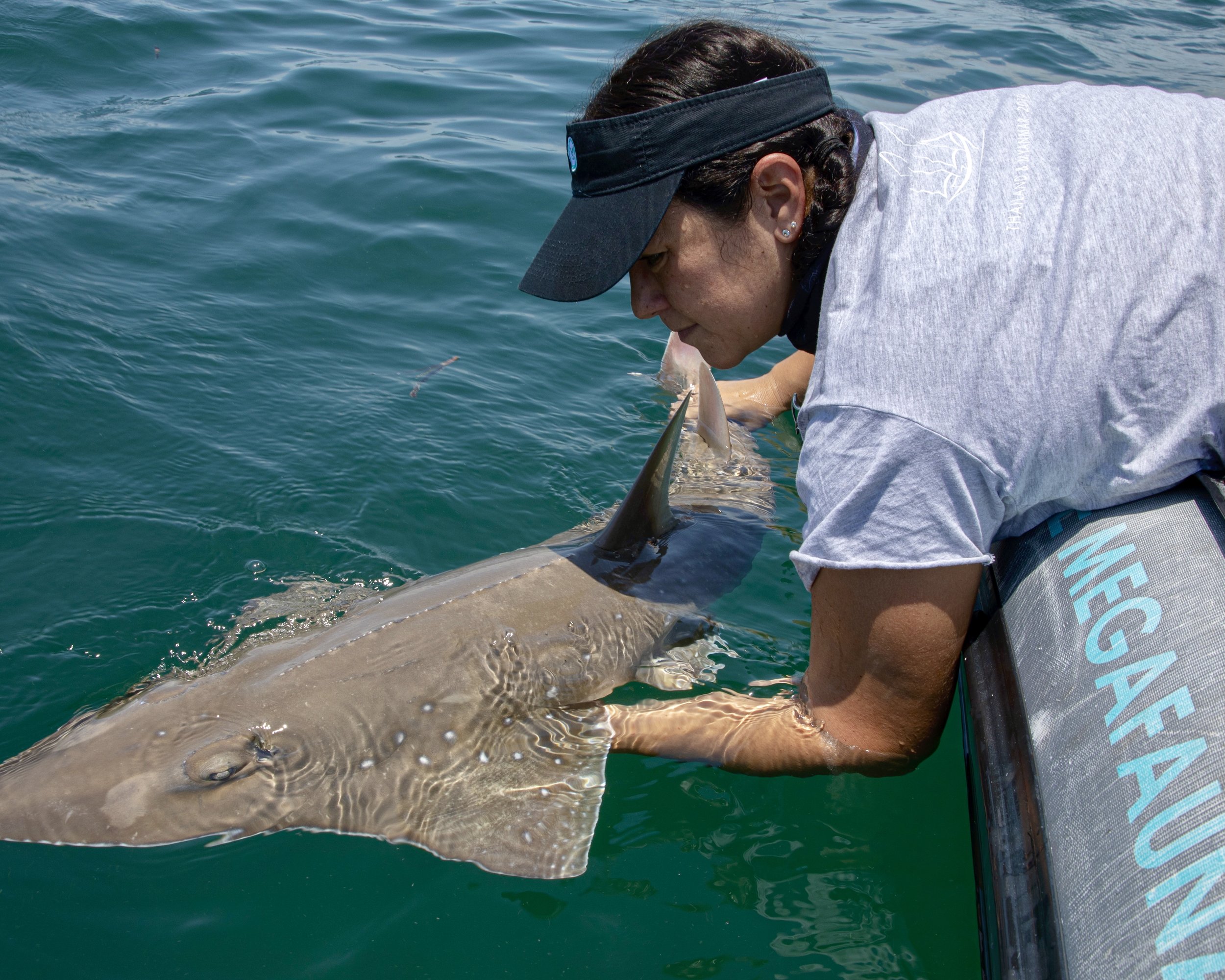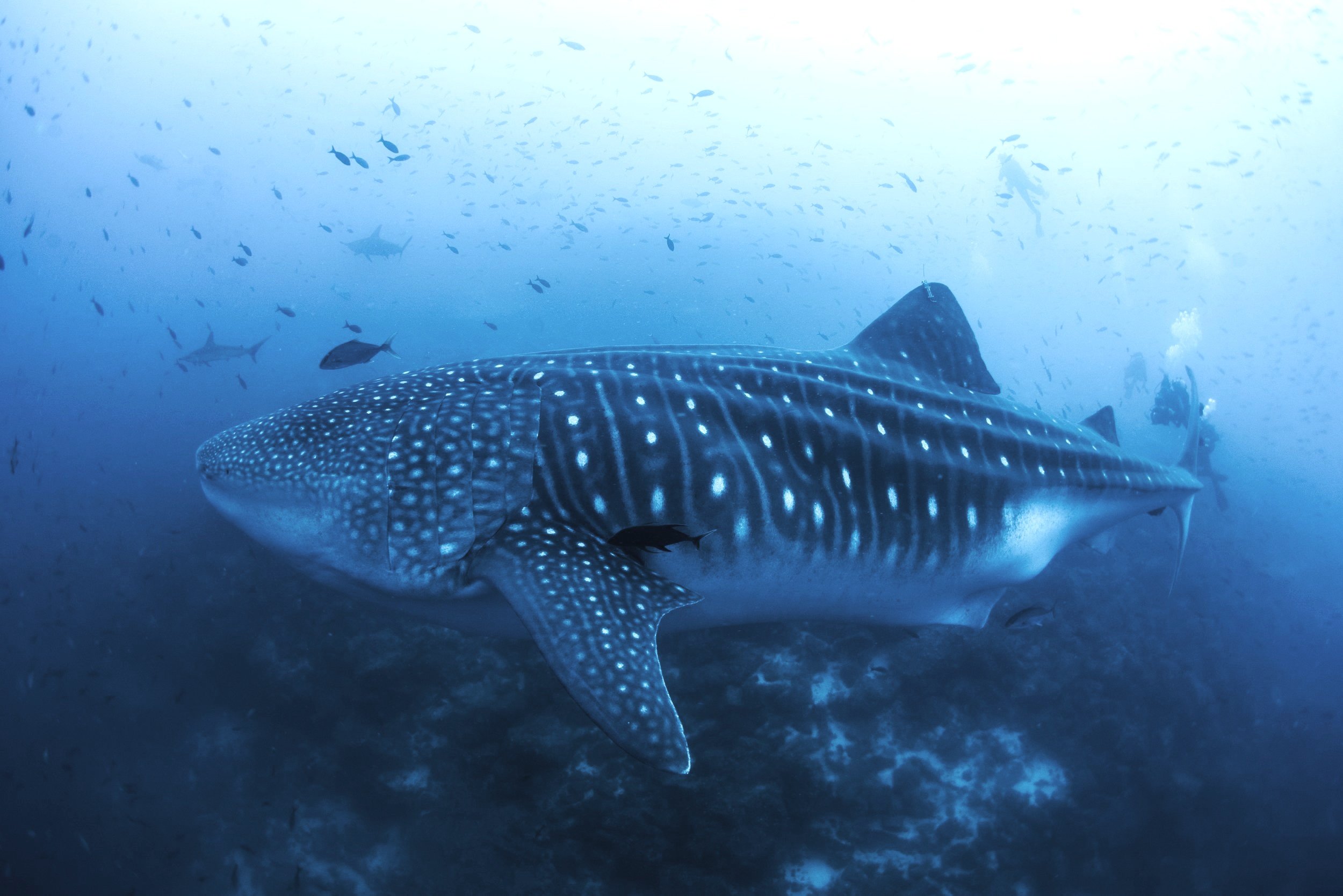Inhambane Seascape in Mozambique Recognized as Mission Blue Hope Spot
Mission Blue has declared the Inhambane Seascape a Hope Spot in recognition of the spatial planning work being done in the area to develop a network of marine protected areas (MPA) in the surrounding waters. Founded by legendary oceanographer Dr. Sylvia Earle, “Mission Blue is uniting a global coalition to inspire an upwelling of public awareness, access, and support for a worldwide network of marine protected areas – Hope Spots.” Mission Blue acknowledges the Marine Megafauna Foundation and their partners’ work assisting the government of Mozambique as they strive to meet the UN Convention on Biological Diversity to formally protect 30% of its marine resources by 2030.
Dr. Sylvia Earle says,
“Mozambique as a country has already taken significant actions to safeguard the extraordinarily rich, highly important life along the coastline. Everything is on the line. There’s an opportunity now to significantly scale up and embrace those areas that are already protected with a larger area along the coast that connects the land with the ocean beyond. I particularly want to salute Andrea Marshall and her team at the Marine Megafauna Foundation—they work with so many large creatures that are so important and so threatened. We’re on the edge of losing them forever unless action is taken now.”
Credit: Dr. Andrea Marshall
The coastline of the Inhambane Province in southern Mozambique is well-known around the world for its thriving biodiversity. The area is rated by the IUCN as a globally outstanding marine conservation area and acknowledged as a potential World Heritage Site by UNESCO. It is a wild and expansive area that holds immense ecological value, extraordinary beauty, and incalculable natural heritage. For Dr. Andrea Marshall, local conservation biologist and Co-Founder of the Marine Megafauna Foundation (MMF), it is her life mission to see the coastline comprehensively protected.
Marshall has spent 20 years in Mozambique and has dedicated her life to supporting the conservation of endangered marine megafauna species. “Our overarching goal is to use science to underpin the comprehensive management of the protected areas that currently exist and provide justification for the expansion of those areas and new adjoining areas along the coastline,” she explains.
A plethora of large iconic marine megafauna species live off of southern Mozambique. The Inhambane Seascape is described as an important region in Africa for creatures like manta rays, whale sharks, dugong, and critically endangered wedgefish species. Five species of sea turtles and numerous species of cetaceans use provincial waters and a number of rare and understudied species also inhabit coastal waters, particularly sharks and rays.
Credit: Dr. Andrea Marshall
"The marine species and habitats of the Inhambane Province are critically important, and extremely fragile. Without relentless research, community advocacy, and international coordination, heavy industry might have already destroyed the unique ecosystems of southern Mozambique. Dr. Marshall, her team at MMF, and community partners have been extremely effective in conducting much needed baselines of ecosystem health, lobbying for the protection of key areas, and building coalitions to oppose harmful industrial practices such as seismic testing for oil and gas. Mission Blue’s Hope Spot designation is yet another wonderful step in the right direction toward encouraging the more sustainable management of this region and the development of responsible tourism models." says Tiffany Schauer executive director of the Our Children’s Earth Foundation.
Unfortunately, substantial areas of the province remain unprotected and unmonitored. Recent increases in fishing pressure, both offshore industrial fishing and artisanal fishing along this coastline, in particular the relatively new use of gillnets and the increased use of seine nets and fish traps, have contributed to documented declines in sightings of manta rays, devil rays, whale sharks, wedgefish, sea turtles, and dugong. Indiscriminate fishing practices and the targeted fishing of apex predators, including sharks, brindle bass, and black marlin are impacting sensitive ecosystems in the region and populations of threatened megafauna that live and migrate to these waters to feed and reproduce.
Credit: Dr. Andrea Marshall
“Our primary objective is to safeguard the globally-significant marine megafauna populations that occur in the Inhambane Province by reducing their primary threats and supporting the development of a network of adjoining marine protected areas,” describes Dr. Marshall regarding MMF’s ongoing work. “These species are often the first to be impacted by human threats. Their populations can quickly crash and cannot be easily re-introduced once they are extirpated from a region. As conservation biologists, this process started 20 years ago with the collection of key ecological data and will end with the development of a well-managed seascape, which can offer the scale of protection needed by these at-risk ocean giants.”
The Bazaruto Archipelago National Park, in the north of the Province, was the first MPA in Mozambique. The Vilanculos Coastal Wildlife Sanctuary followed, providing an important buffer for the park and protecting a key estuary and mangrove system as well as reefs along the San Sebastian Peninsula. Extensions of these protected areas are already being considered to respond to the needs of the threatened species these protected areas are charged with protecting.
Building on to this existing protected seascape is a new even larger area of protection pending off Pomene, in the center of the province. “There are some places worth prioritizing for protection. Pomene is one of them. It is an extraordinary stretch of coastline as beautiful as it is ecologically important. It is a region that boasts some of the most pristine and important mangrove systems and estuaries left in southern Mozambique. Together with government we have identified this area as a priority region for conservation and will diligently work to restore ecosystem function and safeguard the species reliant on the critical habitats along this coastline to protect the marine heritage of Mozambique and to uplift the local communities that depend on them.” says a spokesperson for the Farquhar Group who are in partnership with the National Administration for Conservation Areas (ANAC).
To ensure the viability of long-term conservation efforts across the seascape, MMF is helping these MPA managers to design science-based strategies for at-risk marine megafauna species. But their efforts don’t stop there. “The species we study are rare, most often endangered and available data on them are sparse, so it is important that we integrate our results into regional and international strategies as well. Our data are also often used to assess the conservation status of these threatened species globally on the IUCN Red List and intergovernmental treaties like the Convention on Migratory Species (CMS) and the Convention on the International Trade in Endangered Species (CITES),” Marshall explains.
Credit: Dr. Andrea Marshall
In 2020, MMF, their partners, and local stakeholders came together to voice opposition to a proposed oil and gas project near the National Park and a sand mining project near the Sanctuary. Both projects stalled and were not pursued. Marshall’s team believes that both projects would have had potentially catastrophic impacts on the local environment and on the sensitive species which rely on this coastal habitat. “These extractive industries are constant threats to the viability of the conservation work being done in the region. As a community we will push back until this area is adequately protected and managed,” elaborates Marshall. MMF and its partners believe that the Hope Spot declaration can help provide the necessary attention that this area needs.
The region already bears all of the hallmarks of an iconic African destination and will surely become a major drawcard for tourism in Mozambique. The seaside towns of Tofo Beach and Vilankulo in the province are already world-class marine tourism destinations. “Our aim is to make Vilankulo, a reference in Africa and in the world when it comes to tourism and conservation. We are achieving bit by bit and all of the support for these causes are extremely important.” asserts Williamo Tunzine, Mayor of Vilankulo.
“It is a beautiful and inspiring ecosystem. It represents everything that we as conservationists are trying to save in Africa. There are few places like it left on the planet, and it's absolutely critical that this coastline is protected for future generations to experience," describes Dr. Jen Guyton, conservation biologist and award-winning nature photographer, who has spent time in the seascape with Dr. Marshall’s team.
Dr. Marshall, her team, and their partners on the ground will continue to pioneer the exploration of this remote coastline and lobby for its formal protection. “The Inhambane Seascape is an area of incalculable importance. It’s the marine Serengeti of Africa. None of us will stop until it is properly safeguarded,” she asserts.
Notes to Editors
For questions about this press release, please contact:
Dr. Andrea Marshall - Founder, The Marine Megafauna Foundation
Email: andrea@marinemegafauna.org
The Marine Megafauna Foundation (MMF) was created in 2009 to research, protect, and conserve populations of threatened marine megafauna around the world. ‘Megafauna’ are large iconic marine species such as sharks, rays, and sea turtles. MMF is a 501c3 not-for-profit organization in the United States. In Africa, they are headquartered in Tofo Beach, Mozambique, where they operate as Associação Megafauna Marinha (AMM). For more details on MMF please visit www.marinemegafauna.org or learn more about their Mozambican projects here. For regular updates on MMF’s work please follow them on Instagram, Facebook, Twitter, and LinkedIn.













